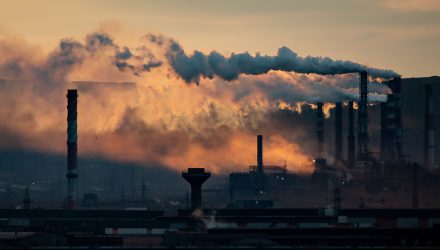The carbon dioxide levels in the atmosphere, one of the key pollutants responsible for trapping heat on the planet, recently surpassed a critical milestone of 50% higher than pre-industrial levels, reported PBS.
The National Oceanic and Atmospheric Administration’s measurements at its monitoring station in Hawaii reported 421 parts per million on average for May. Pre-industrial levels were around 280 parts per million. It’s believed that reductions to 350 ppm would provide sustainable conditions, but for now, the numbers continue to climb.
“Humanity has to make more serious efforts and see a rapid decrease in greenhouse gas emissions, or else the impacts of climate change will only continue to worsen,” said Jonathan Overpeck, environmental dean at the University of Michigan.
There was a slowdown in emissions at the onset of the COVID-19 pandemic in 2020 but since then, numbers have been on the rise, with the world on average producing 10 billion metric tons of carbon annually. May is typically the peak time to measure for the year before plants reach optimal growth to begin drawing carbon from the air.
Current levels haven’t been seen in over 4 million years, since the time of the Pliocene era, when the earth was seven degrees warmer and sea levels were between 16-82 feet higher than now. The drastic difference in climate was due to the gradual increase to those levels millions of years ago, whereas human intervention has caused exponential atmospheric carbon dioxide gains in a very minimal time.
If changes aren’t made and CO2 isn’t curtailed, “we will see ever more damaging levels of climate change, more heat waves, more flooding, more droughts, more large storms, and higher sea levels,” said Donald Wuebbles, a climate scientist at the University of Illinois.
Investing in Carbon Reductions Through Allowances Globally
The KraneShares Global Carbon ETF (NYSE: KRBN) offers the first-of-its-kind take on carbon credits trading and is in a position to capture the rise in carbon allowance prices as emissions limits become more stringent globally and countries tackle the carbon crisis.
KRBN tracks the IHS Markit Global Carbon Index, which follows the most liquid carbon credit futures contracts in the world.
This includes contracts from the European Union Allowances (EUA), California Carbon Allowances (CCA), and Regional Greenhouse Gas Initiative (RGGI) markets. North American pricing data is supplied by IHS Markit’s OPIS service, while European prices are supplied by ICE Futures Pricing.
KRBN invests in its futures contracts via a Cayman Islands subsidiary, meaning that it can avoid distributing the dreaded K-1 tax form to its shareholders.
KRBN carries an expense ratio of 0.78% and has nearly $1.2 billion in net assets.
For more news, information, and strategy, visit the Climate Insights Channel.

